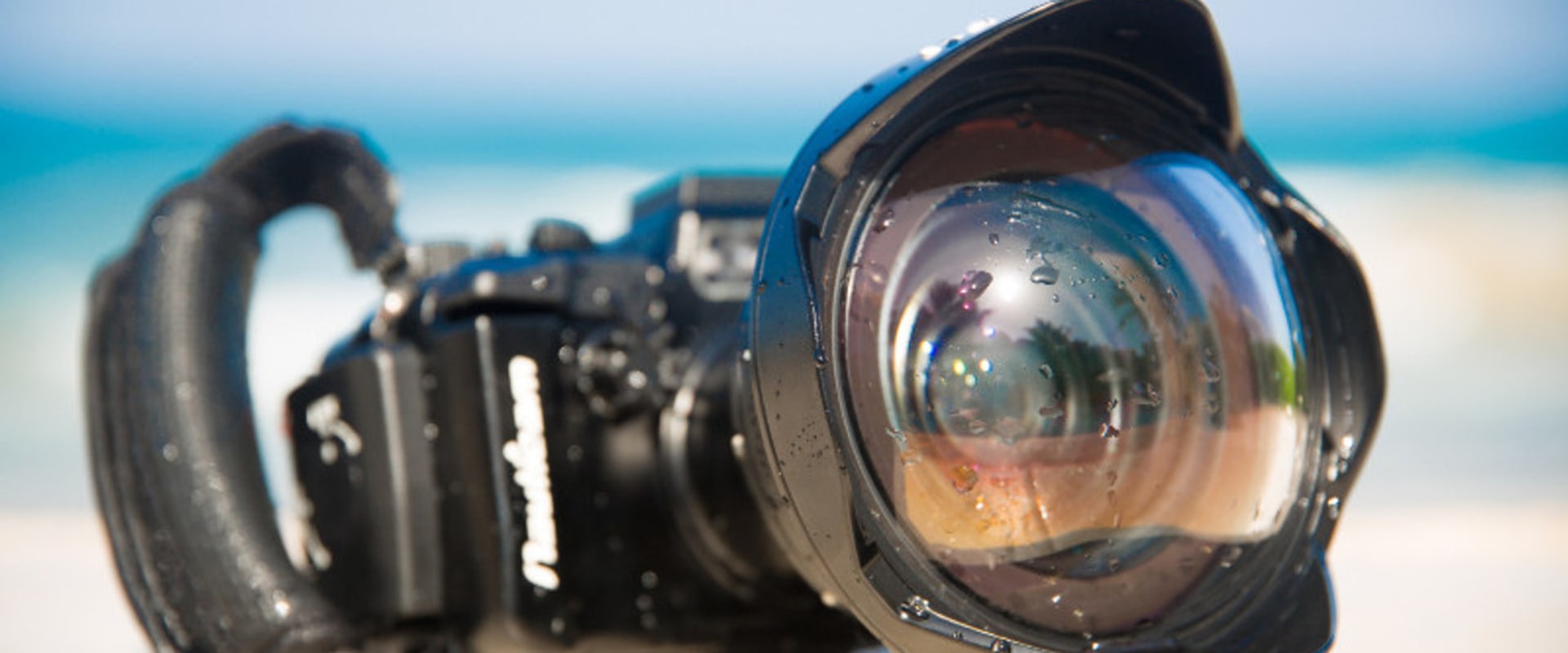Whether you're a professional photographer or an amateur looking to take your photography to the next level, cameras and lenses are two of the most important pieces of equipment you'll need. With so many options on the market, however, choosing the right camera and lens can be a daunting task. This comprehensive overview of cameras and lenses will help you understand the different types of cameras and lenses, their features, and how they can help you get the perfect shot. We'll start by discussing the different types of cameras and lenses available, including their pros and cons. We'll then cover the features that differentiate one camera or lens from another, and how to choose the right one for your needs.
Finally, we'll discuss some tips for using your camera and lens to get the best results. By the end of this overview, you'll have a better understanding of cameras and lenses, so you can make an informed decision when it comes to selecting the right equipment for your photography.
Selecting a Camera & Lens
When selecting a camera and lens for a specific type of photography, there are a few factors to consider. One of the most important is budget. It is important to consider how much you can afford to spend on equipment, as some cameras and lenses can be quite expensive. Size and weight are also important factors, as larger and heavier cameras and lenses will be less portable and may not be suitable for certain types of photography.Additionally, it is important to consider the features of the camera and lens, such as megapixels, ISO, shutter speed, aperture, focal length, and more. Different features will be better suited for different types of photography. For example, portrait photography often requires higher megapixels and lower ISO settings than action photography. Macro photography needs a lens with a longer focal length than landscape photography. It is important to research the features of different cameras and lenses to find the right one for your needs.
Camera Accessories
Camera accessories are essential to take great photos.Tripods, light stands, and flash units can help enhance your photos and make them look more professional. Tripods are especially helpful for keeping your camera still when shooting in low light and for taking long exposures. Light stands can provide additional lighting for your shots, whether you're shooting indoors or outdoors. Flash units can give your photos a dynamic look and provide additional light for your subject.
All of these accessories can help you take better photos and expand your creative potential. When choosing camera accessories, it's important to consider the type of photography you'll be doing. If you're shooting landscapes, a tripod is a must-have, as it will help keep your camera steady in low light conditions and allow you to take long exposures. For portrait photography, a light stand is essential, as it will provide additional lighting for your subject. Flash units are also great for portrait photography as they can give your photos a dynamic look by adding additional light to the subject. It's also important to consider the quality of the accessories you purchase.
Make sure that the tripod or light stand is strong and sturdy enough to hold your camera, and that the flash unit is reliable and has the features you need. By selecting quality camera accessories, you'll ensure that they last a long time and help you take better photos.
Types of Lenses
When it comes to cameras and lenses, there are a variety of different types to choose from. Each type has its own unique features and benefits, so it's important to understand the differences between them. Prime lenses, zoom lenses, wide-angle lenses, and telephoto lenses are some of the most popular types of lenses available.Prime Lenses:
Prime lenses are fixed-focal-length lenses that do not have any zoom capability.They provide a clear and sharp image with minimal distortion. Prime lenses tend to be smaller and lighter than zoom lenses, making them ideal for travel photography. They also tend to be more affordable than other types of lenses.
Zoom Lenses:
Zoom lenses are versatile lenses that offer the ability to change focal lengths. They allow you to capture different types of shots by easily adjusting the focal length.Zoom lenses are typically heavier and more expensive than prime lenses, but they offer greater flexibility when shooting.
Wide-Angle Lenses:
Wide-angle lenses are designed to capture a wider field of view than other types of lenses. They are ideal for landscape photography, as they allow you to capture more of the scene in a single shot. Wide-angle lenses also work well for architectural photography and street photography.Telephoto Lenses:
Telephoto lenses are designed to capture distant subjects with clarity and detail. They offer greater magnification than other types of lenses, allowing you to capture faraway subjects with ease.Telephoto lenses are typically used for sports and wildlife photography.
Maintaining Your Camera & Lens
To ensure optimal performance, it is important to take proper care of your camera and lens. This includes regularly cleaning the equipment, replacing any worn or damaged parts, and using the right protective gear when necessary. In addition, you should regularly check your equipment for dust, dirt, and other debris that can affect the quality of images. When cleaning your camera and lens, use a soft cloth, preferably one made of microfiber.Avoid using chemical cleaners as these can damage sensitive parts. If you're cleaning a lens, use a lens cleaning solution and gently wipe in circular motions. Make sure to clean the body of the camera as well to avoid any possible damage to the internal components. It is also important to replace any worn or damaged parts on your camera and lens. This includes things like batteries, memory cards, and lens caps.
A worn out battery can reduce the life of your camera and lenses, so it's important to replace them when needed. Additionally, if you are using a lens with an adjustable aperture or focusing ring, make sure to check it regularly for any signs of wear or damage. When using your camera and lens in extreme conditions, such as rain or snow, it's important to use the right protective gear. This includes a waterproof case, lens hoods, and UV filters. This will help keep your equipment safe from damage and keep your images free from distortion caused by moisture or dust particles. Finally, it's important to check your camera and lens regularly for dust, dirt, and other debris that can affect the quality of images.
This can be done with a blower brush or by gently wiping down the body of the camera and lens with a soft cloth. If you find any dirt or debris on your camera or lens, make sure to clean it off immediately.
Types of Cameras
When it comes to cameras, there are a variety of types available to choose from. The two main categories are digital single-lens reflex (DSLR) cameras and mirrorless cameras. DSLR cameras are the most popular type, and they use a mirror-based optical viewfinder system that allows you to compose your image through the viewfinder.These cameras also feature interchangeable lenses, which allow you to customize your camera setup for different types of photography. Mirrorless cameras, on the other hand, use an electronic viewfinder system that allows you to see a live preview of what your image will look like before you take it. These cameras are usually smaller and lighter than DSLRs, and they also have interchangeable lenses. In addition to DSLRs and mirrorless cameras, there are also point-and-shoot cameras and instant cameras.
Point-and-shoot cameras are small and lightweight, and they usually have a fixed lens that cannot be changed. They are perfect for everyday photography, such as taking snapshots of family and friends. Instant cameras produce physical prints of your images that you can keep for years to come. No matter which type of camera you choose, it is important to understand the components of each camera and lens, such as megapixels, ISO, shutter speed, aperture, focal length, and more. By learning about these features and how they can affect your images, you will be able to make an informed decision when selecting the right camera for your photography needs.




Leave Message